Are your employees engaged? Are you prepared to keep your employees engaged during times of personal crisis? From one employee who has been through a significant personal crisis, my experience with my employer offers a variety of ideas you can take back to your organization so you’re ready when the time comes.
For many companies, the question of employee engagement is on leaders’ minds because engagement often leads to greater employee retention and productivity, improving the business’s bottom line. For some companies, leaders can confidently answer, “Yes, my employees are engaged.” For others, the answer is not so simple. So much can improve or detract from employee engagement: large issues, such as major corporate initiatives, mergers, organizational changes, or the economy; or small ones, such as changing the location of a desk, updating an expense policy, or adding a new co-worker.
One rarely discussed aspect of employee engagement is how to support employees in times of personal crisis. This is an uncomfortable topic, because it’s easier to focus on the positive than the negative. But times of crisis provide companies and individual leaders a chance to genuinely demonstrate commitment to employees’ well-being, an important driver of overall engagement. Incorporate these suggestions into your corporate culture now to better support your employees later. It’s good for your employees, and it’s good for your company.
‘LET ME KNOW HOW I CAN HELP’
Anyone who has spent time on Facebook lately may have seen a list floating around, an article originally published in The Huffington Post titled “44 Ways to Make the Day of Someone with Cancer.” The author, diagnosed with acute lymphoblastic T-cell lymphoma, said such an experience can make one “so overwhelmed they have no idea how to ask for help or what to ask for — but they sure need it.” In response to the generic, “Let me know how I can help,” the author created a list of tangible ways friends, family, and co-workers could anticipate and offer support for a loved one.
As the primary caregiver when my husband of eight years was diagnosed with stage two Hodgkin lymphoma and underwent six months of chemotherapy and weeks of radiation, I understood that overwhelmed feeling. I wish I’d had access to this list so I could share it with others and say, “Here, this is how you can help us.” Unfortunately, I didn’t. Fortunately, I was surrounded by an amazing personal and professional support network that stepped in when I needed it most.
The article “44 Ways to Make the Day of Someone with Cancer” provides great tips for the individual, but what about for companies? What can companies do for their employees, or what can employees do for each other in a time of crisis? Some actions can be small, individual efforts, while others may require larger shifts in corporate culture. Regardless of the level of effort, providing for employees at difficult
times goes beyond the kindness of the corporate heart. There’s business value in keeping employees engaged as they’re going through a crisis. Supporting the employee builds loyalty (increased retention) and a desire to go above and beyond (higher discretionary effort), both of which directly benefit the company’s bottom line.
THE EASY STUFF
Small things really make a big difference. Once your company is confident it has the basics in place to provide long-term employee security in good times and bad — a 401(k) program, the right health benefits, and so forth — a few additional simple tactics during a crisis can increase loyalty and the value of your employee experience.
- Organize meals. How amazing is it to have a group of colleagues band together and provide something as simple and non-work-related as a meal on the table? It doesn’t matter if you outsource the whole process. The fact that you thought about nourishing an employee can be pretty powerful.
- Celebrate the milestones. One program my organization has in place is “Ring the Bell,” which recognizes employees’ professional accomplishments, such as speaking as a subject matter expert to a professional organization, and personal accomplishments, such as the birth of a child or earning an MBA. The company sends virtual kudos in the form of emails to all employees, and people can ring a physical bell in the office, too. It’s a chance for people to rally around fellow employees. When my husband completed his last chemotherapy session, a Ring the Bell email went out to employees to celebrate the milestone.
- Show support. Write a personal card letting an employee know you’re in their corner and there to be supportive. Alternatively, take five minutes to stop by and ask how a team member is doing. You don’t have to pry, just open the door; the employee can choose whether or not to take the next step in the conversation.
- Unexpected treats. With a little research — such as talking with the employee’s office mates — a leader can find out and arrange what would be considered a treat to the employee. It might be a day at the spa to relax or hiring a house cleaner. Then, work to put the surprise into action. The important thing is to make it personal and relevant, as these types of experiences show leaders truly care about their employees by taking the time to understand what is important to them. This costs money, but creates loyalty, which can pay long-term dividends.

Go beyond the ‘Employee Helpline’
Upon receiving news of my husband’s cancer diagnosis, I didn’t think, “I guess it’s time to call the Employee Assistance Program so I can talk to a perfect stranger on the phone to figure this out.” I called my mentors. I called my leaders. I called people I knew could — and would — help me. Instead of relying on a generic 1-800 helpline and saying, “OK, we’ve ticked this box to give people support,” companies should proactively pronounce that leaders are resources not just for professional coaching, but also for personal needs.
Leaders can step in by designing flexible work assignments. This is easier for some organizations and employees than others. But explore the opportunity to temporarily move the employee to a different role. Are there internal-facing roles that don’t have the external demands of working daily with clients? Are there special projects you’ve wanted to get done, but never prioritized because everyone was too busy? A third option: Provide an adjusted work schedule, such as condensing work into four days instead of five.
Each option allows employees the ability to be out of the office for full days of doctor appointments, home care for a loved one, and so forth. Such opportunities provide employee flexibility while still keeping them active, earning an income, and contributing to the growth of the company.
Create a culture where vulnerability is OK
Whoa … this sounds awfully “touchy-feely.” You may say, “But we’re running a business!” Yes, and it’s important that employees can bring their full selves to work, rather than lock a large part of themselves away when they cross the threshold of their cubicle.
This doesn’t mean leaders keep boxes of tissues on their desks because they’re encouraging everyone to “cry it out.” It means encouraging an open-door policy where leaders show more of their human side. This can be as simple as initiating a conversation with the employee by saying, “I understand what you’re going through” (if they do have personal experience in a similar situation) or “I don’t understand what you’re going through, but I am here to support you.”
This small action can open the door to more personal relationships with leaders and encourages employees to do the same. Start small and things can really grow from there. When leaders create a culture where vulnerability is OK, employees are better able to bring their whole selves to work. That leads to an environment where employees can focus better and achieve more, in good times and bad.
According to Brené Brown, a research professor and leading expert on the study of vulnerability, courage, worthiness, and shame, “When we shut ourselves off from vulnerability, we distance ourselves from the experiences that bring purpose and meaning to our lives and our work.” When this happens, innovation, creativity, trust, accountability, and adaptability to change go out the window. Companies that don’t recognize vulnerability as an important aspect of the workplace are missing out on critical employee contributions.
The Six Drivers of the Jabian Engagement Framework

Engagement Drivers
These suggested actions will resonate with employees differently, depending on what drives their individual engagement. When developing a program to best support employees in times of crisis, or taking individual action, keep in mind the six drivers of engagement from the Jabian Engagement Framework.
Growth
People are motivated by learning something new and interesting, mastering a new skill, meeting a goal, achieving a personal best, or moving up the ladder in relation to their peers. Employees going through a personal crisis may need to take their foot off the gas in their planned growth path, so consider providing special project assignments that will allow them to continue to grow given their circumstances. Remember to celebrate both their professional and personal successes.
Relationships
Social relationships are a key source of engagement, whether people are introverted or extroverted. Actions that bring people closer together and improve relationships enhance engagement. Seek out ways for employees to maintain strong relationships with their peers, mentors, and leaders during times of crisis to minimize feelings of isolation. Create a culture of vulnerability where employees are encouraged to connect with each other and their leaders, and demonstrate it’s OK to ask for help.
Security
When people feel secure about their future — in their jobs and lives — they can fully engage in their organization, showing increased business and personal results. A personal crisis can bring great uncertainty, significantly depleting security. Leaders should strive to make things as clear as possible and reassure employees their job is one thing they don’t need to worry about while weathering the storm.
Autonomy
Individuals are motivated by having input into what they work on, how they manage their work, when they work, who they work with, and where they work. Providing flexible work assignments that increase freedom and autonomy can be a powerful way to maintain or increase engagement during a personal crisis.
Fairness
Fairness is a very strong engagement driver and is often in the eye of the beholder. The key to this driver is to eliminate the perception that special arrangements for one employee are unfair to others. Address the subject through open and honest communication with the broader group and individual discussions. Explain why exceptions are being made (to the extent the employee going through the crisis and/or HR are comfortable with sharing), to reduce or eliminate the feeling of unfairness.
Well-Being
This engagement driver encompasses health, both in mind and body. It also incorporates rest and fun. An employee who is sleep-deprived, unhealthy, and rarely laughs is not an engaged employee. A crisis triggers many of these scenarios, so it is extremely important to encourage healthy habits (providing meals), adequate rest (through additional PTO/leave options), and an enjoyable work environment (temporarily reduced deadlines or performance expectations) to maintain engagement.
When leaders create a culture where vulnerability is OK, employees are better able to bring their whole selves to work.
Happily ever after
These tips and increased knowledge of employee engagement drivers — in good times and bad — should prepare employers to best support employees in times of crisis. Or, if you’re someone going through a crisis, share this article with your own leaders to start a dialogue about how to help. Trust me, you’ll thank me for this.
